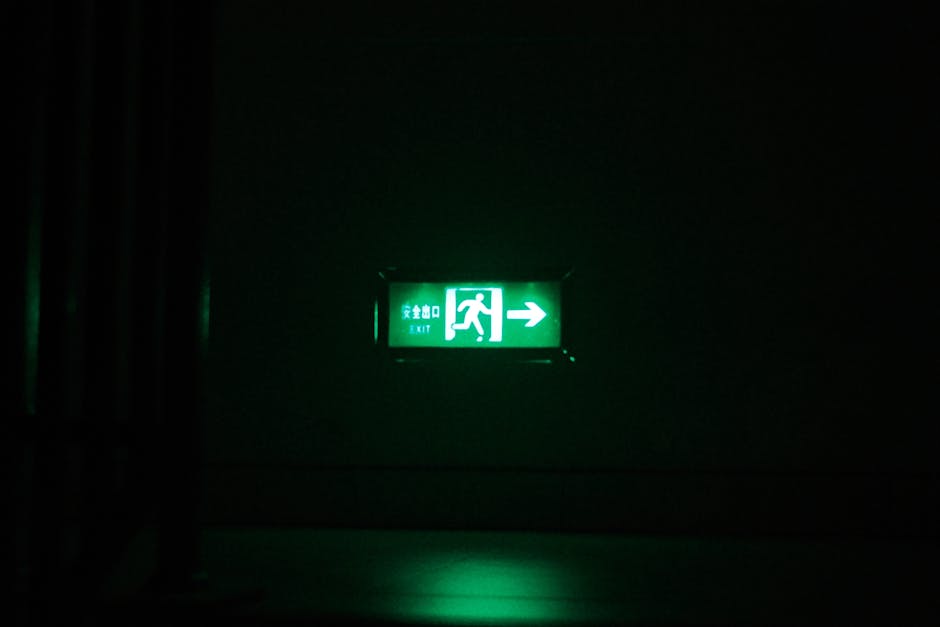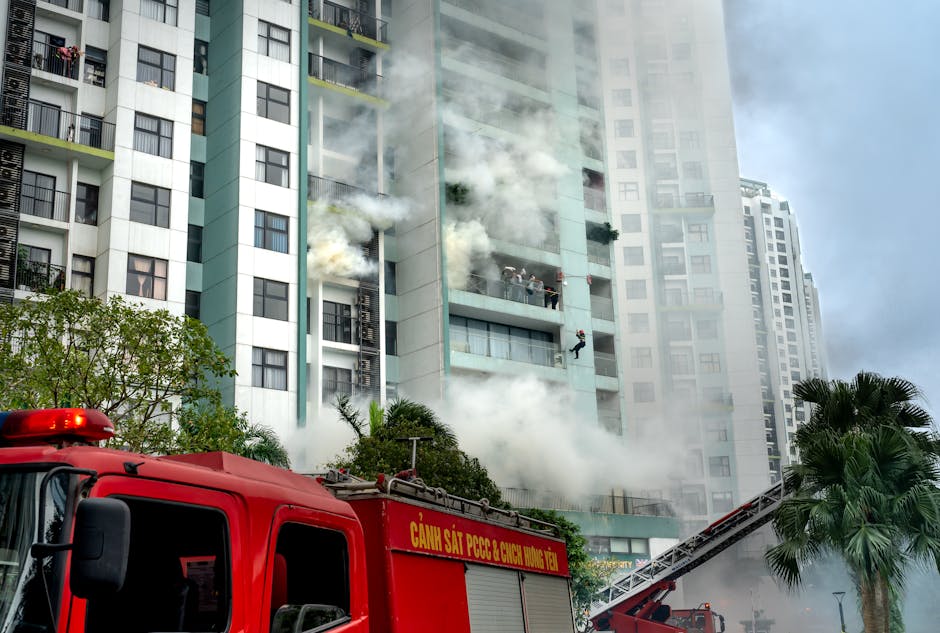Emergency Preparedness: A Comprehensive Guide for Workplace Safety
“In today's unpredictable world, having a robust emergency preparedness plan is essential for every organization. This comprehensive guide explores the key components of workplace emergency planning, from risk assessment to response protocols, helping HR and facility managers create safer environments for their employees. ”

Emergency Preparedness: A Comprehensive Guide for Workplace Safety
In an increasingly unpredictable world, emergency preparedness has become a critical component of workplace management. Natural disasters, health crises, security threats, and technological failures can disrupt operations and put employees at risk. For HR managers, IT directors, facility managers, and educational administrators, developing comprehensive emergency plans is not just a regulatory requirement—it's a fundamental responsibility to protect people and assets.

Understanding Emergency Preparedness in the Workplace
Emergency preparedness encompasses all the strategies, procedures, and resources an organization puts in place to respond effectively to potential disasters or crises. The overall goal is to ensure safety by preparing for possible emergencies, responding quickly to minimize damage, and limiting exposure to hazardous materials or other dangers.
A well-designed emergency preparedness plan serves multiple purposes:
- Protecting the health and safety of employees, visitors, and customers
- Minimizing damage to facilities, equipment, and resources
- Ensuring business continuity during and after an emergency
- Meeting regulatory compliance requirements
- Reducing potential liability and financial losses
According to FEMA (Federal Emergency Management Agency), organizations with comprehensive emergency plans recover more quickly from disasters and experience fewer long-term negative impacts.
Key Components of an Effective Emergency Preparedness Plan
1. Risk Assessment and Hazard Identification
The foundation of any emergency preparedness plan is a thorough assessment of potential risks specific to your organization and location. This assessment should identify:
- Natural disasters common to your geographic area (hurricanes, earthquakes, floods, etc.)
- Technological hazards (power outages, IT system failures, chemical spills)
- Human-caused threats (workplace violence, terrorism, cyber attacks)
- Health emergencies (pandemics, outbreaks, medical emergencies)
Each identified risk should be evaluated based on likelihood and potential impact, allowing you to prioritize your planning efforts.
2. Emergency Response Procedures
Once risks are identified, develop clear, actionable procedures for each type of emergency. These procedures should outline:
- Immediate response actions for employees
- Evacuation routes and assembly points
- Shelter-in-place protocols
- Communication methods during emergencies
- Roles and responsibilities of emergency response team members
For example, evacuation procedures for a fire will differ significantly from lockdown procedures during a security threat. Each scenario requires specific, well-documented protocols that employees can easily follow during high-stress situations.

3. Communication Plan
Effective communication is crucial during emergencies. Your plan should include:
- Primary and backup communication methods (phone trees, mass notification systems, emergency apps)
- Clear chains of command for information dissemination
- Procedures for communicating with external stakeholders (customers, vendors, media)
- Regular updates during prolonged emergencies
- Post-incident communication protocols
Many organizations are now implementing digital solutions for emergency communications, including mobile applications that can send alerts, track employee safety, and provide real-time updates during critical situations.
4. Emergency Response Team Formation and Training
Designate and train a dedicated emergency response team responsible for implementing your plan during an actual emergency. This team should:
- Receive specialized training in emergency procedures
- Conduct regular drills and exercises
- Be equipped with necessary emergency equipment
- Understand their specific roles during different types of emergencies
- Stay updated on the latest emergency response best practices
Team members should be distributed throughout your facility and across different shifts to ensure coverage at all times.
5. Resource Management
Identify and secure the resources needed during emergencies, including:
- First aid supplies and medical equipment
- Emergency food and water
- Backup power sources
- Communication devices
- Personal protective equipment
- Emergency tools and equipment
Build a kit with these essential supplies and store them in accessible locations throughout your facility. Regularly inspect and replenish these resources to ensure they're ready when needed.
Implementing Your Emergency Preparedness Plan
Documentation and Accessibility
Document your emergency plan thoroughly and make it accessible to all employees. Consider:
- Creating digital and physical copies of the plan
- Posting evacuation maps and emergency procedures in visible locations
- Developing quick-reference guides for common emergencies
- Ensuring the plan is accessible to employees with disabilities
- Translating materials for non-English speaking employees
Your emergency plan should be a living document that evolves as your organization changes and as you learn from drills and actual emergencies.
Training and Drills
Regular training and practice drills are essential components of emergency preparedness. They help:
- Familiarize employees with emergency procedures
- Test the effectiveness of your plan
- Identify areas for improvement
- Build confidence in emergency response capabilities
- Meet regulatory requirements for emergency drills

Consider conducting both announced and unannounced drills to better simulate real emergency conditions. After each drill, gather feedback and make necessary adjustments to your plan.
Technology Integration
Modern workflow optimization tools and digital solutions can significantly enhance emergency preparedness efforts. Consider implementing:
- Emergency notification systems that can reach employees through multiple channels
- Mobile apps that provide emergency procedures and contact information
- Digital floor plans with marked evacuation routes
- Cloud-based document storage for emergency plans and resources
- Video surveillance systems that can help monitor emergency situations
These technological solutions can improve response times, provide better situational awareness, and help coordinate emergency efforts more effectively.
Special Considerations for Different Workplace Settings
Office Environments
In traditional office settings, emergency preparedness should focus on:
- Clear evacuation routes that accommodate open floor plans and cubicle arrangements
- Procedures for assisting visitors who may be unfamiliar with the building
- Protocols for securing sensitive information during emergencies
- Collaborative workspaces that can be quickly converted to emergency command centers if needed
Manufacturing and Industrial Facilities
These environments present unique challenges, including:
- Hazardous materials management and containment
- Machine shutdown procedures
- Personal protective equipment requirements
- Higher noise levels that may affect emergency communications
- Complex facility layouts that may complicate evacuation
Educational Institutions
Schools and colleges need to consider:
- Age-appropriate emergency procedures for different student groups
- Protocols for accounting for all students during evacuations
- Parent notification and reunification procedures
- Special considerations for students with disabilities
- Flexible seating arrangements that don't impede quick evacuations
Remote and Distributed Workforces
With more employees working remotely, emergency planning must extend beyond physical facilities to include:
- Guidelines for home office safety
- Virtual check-in procedures during regional emergencies
- Support resources for remote employees experiencing emergencies
- Continuity plans for distributed teams
Compliance and Regulatory Considerations
Emergency preparedness plans must comply with various regulations, including:
- Occupational Safety and Health Administration (OSHA) requirements
- Americans with Disabilities Act (ADA) accessibility standards
- Local fire codes and building regulations
- Industry-specific requirements
- State and local emergency planning mandates
Regular reviews of your plan against current regulations are essential to maintain compliance and avoid potential penalties.
Evaluating and Improving Your Emergency Preparedness Plan
Regular Reviews and Updates
Your emergency plan should be reviewed and updated:
- At least annually
- After any actual emergency or near-miss
- When there are significant changes to your facility or operations
- When new threats or hazards are identified
- When regulations change
Performance Metrics
Establish metrics to evaluate the effectiveness of your emergency preparedness efforts, such as:
- Response times during drills
- Employee knowledge retention of emergency procedures
- Resource availability and readiness
- Communication effectiveness
- Compliance with regulatory requirements
Continuous Improvement
Use lessons learned from drills, exercises, and actual emergencies to continuously improve your plan. Encourage feedback from all levels of the organization and incorporate best practices from your industry.

Leveraging Technology for Enhanced Emergency Preparedness
Modern technology offers powerful tools to enhance emergency preparedness efforts:
Mobile Applications
Dedicated emergency response apps can provide:
- Instant notifications and alerts
- Digital versions of emergency procedures
- Location tracking for employees during evacuations
- Two-way communication capabilities
- Access to emergency contacts and resources
These mobile applications make critical information available to employees wherever they are, improving response times and coordination.
Integrated Building Systems
Smart building technologies can enhance emergency response through:
- Automated emergency lighting and exit signage
- Integrated fire detection and suppression systems
- Access control systems that can be quickly modified during emergencies
- Digital signage that displays emergency information and evacuation routes
- Building automation systems that can control HVAC during hazardous material incidents
Data Analytics and Predictive Tools
Advanced analytics can help organizations:
- Identify potential emergency scenarios based on historical data
- Optimize resource allocation for emergency response
- Improve evacuation planning through crowd flow analysis
- Evaluate the effectiveness of emergency drills and exercises
- Predict the potential impact of various emergency scenarios
Creating a Culture of Preparedness
Beyond plans and procedures, fostering a culture of preparedness throughout your organization is essential for effective emergency response:
Leadership Commitment
Visible support from leadership demonstrates the importance of emergency preparedness. Leaders should:
- Allocate adequate resources for emergency planning
- Participate in drills and exercises
- Regularly communicate about the importance of preparedness
- Recognize and reward emergency preparedness efforts
- Lead by example in following emergency procedures
Employee Engagement
Engage employees in emergency planning through:
- Emergency response team volunteer opportunities
- Feedback mechanisms for improvement suggestions
- Recognition of participation in drills and training
- Personal preparedness education that extends beyond the workplace
- Regular communication about emergency preparedness updates
Integration with Business Continuity
Emergency preparedness should be integrated with broader business continuity planning to ensure:
- Critical business functions can continue during emergencies
- Essential resources are protected
- Recovery processes are in place
- Customer and stakeholder needs are addressed
- Financial impacts are minimized
Conclusion: Building Resilience Through Preparedness
Effective emergency preparedness is not just about compliance or checking boxes—it's about building organizational resilience. By developing comprehensive plans, training employees thoroughly, leveraging appropriate technology, and fostering a culture of preparedness, organizations can:
- Protect their most valuable assets—their people
- Minimize the impact of emergencies when they occur
- Recover more quickly from disruptions
- Demonstrate commitment to employee safety and well-being
- Build confidence among stakeholders
In today's unpredictable world, the question is not if an emergency will occur, but when. The time to prepare is now, before an emergency strikes. By investing in emergency preparedness today, organizations can ensure they're ready to face whatever challenges tomorrow may bring.
Remember that emergency preparedness is an ongoing process, not a one-time project. Regular reviews, updates, and practice are essential to maintain readiness and ensure your organization can respond effectively when emergencies occur.